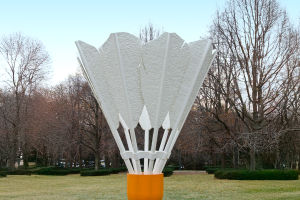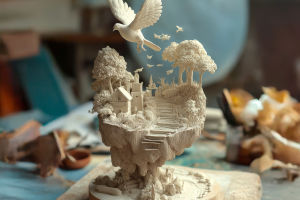Imagine sculpting a figure so intricate that it would take months, maybe years, to carve by hand—but with 3D printing, it's done in hours. That's not science fiction anymore; it's the evolving reality of sculpture today.
The traditional chisel and marble are no longer the sole tools of the sculptor. Digital files, modeling software, and layer-by-layer printing are now co-authoring a new chapter in this ancient art.
The Shift from Manual to Digital
For centuries, sculpture relied heavily on manual labor—hammering, chiseling, and molding materials like stone, bronze, or clay. While this method carries deep artistic value, it also imposes natural limitations. Complex forms, especially those with internal geometry or delicate lattices, are nearly impossible to achieve by hand.
3D printing changes the rules entirely. With 3D modeling software, artists can now design their sculptures digitally, experimenting freely with shapes, symmetry, and structure. Once finalized, the design is printed in layers using materials like resin, plastic, or metal.
1. Enhanced Detail and Precision
One of the most powerful benefits of 3D printing is unmatched precision. Unlike hand-carving, where every line is vulnerable to human error, 3D printers follow digital blueprints down to the micrometer.
Example: A sculptor wanting to depict the texture of reptile skin or fine strands of hair might struggle to render that by hand. With 3D printing, those details are built into the digital file and printed flawlessly—no polishing or reworking needed.
This means artists can focus more on the creative process and less on technical limitations. They can dream bigger, knowing the machine can handle the complexity.
2. Speed and Efficiency in Prototyping
Traditional sculpture demands time—sometimes a lot of it. Drafting a clay model, refining it, and eventually casting it in a final material can stretch over weeks or months. 3D printing streamlines the prototyping phase significantly.
Here's how:
• Artists can test multiple variations without starting over.
• They can quickly print scaled-down versions to visualize and adjust form.
• Mistakes or changes don't require a full re-do—just edit the digital file.
For artists working under deadlines, this shift isn't just convenient; it's game-changing.
3. New Materials, New Possibilities
3D printing opens the door to materials beyond traditional media. While artists still use familiar substances like bronze (via casting), many are experimenting with lightweight composites, biodegradable plastics, and even flexible filaments that allow motion.
For instance: an artist might create a kinetic sculpture—something with moving parts—that would be nearly impossible to build from stone or metal without expert engineering. With the right filament and printer settings, motion-ready pieces can come straight off the print bed.
4. Democratizing Sculpture
Sculpture has long been seen as a high-barrier art form, often requiring expensive materials, large studio space, and years of apprenticeship. But 3D printing is leveling the field.
Why?
• Entry-level 3D printers now cost less than $500.
• Free or low-cost software lets beginners model with basic training.
• Digital files can be shared, duplicated, and reprinted worldwide.
This means aspiring artists without access to a studio or foundry can still bring their visions to life—and even start selling work online.
5. Challenges and Ethical Questions
Of course, 3D printing isn't without its challenges. Some critics argue that it removes the "handmade" essence of sculpture. Others worry that easily duplicating sculptures may dilute artistic value.
There's also the issue of digital plagiarism. Just as music and design face copyright concerns, so too does 3D-printed sculpture. Artists must now think about how to protect digital files, and how to prove originality in a world where perfect copies are possible.
Still, many sculptors see these questions not as roadblocks, but as part of the art world's ongoing evolution—where technology adds new layers, not replaces the old ones.
What This Means for the Future
The fusion of traditional artistry and digital precision is not a threat—it's a creative expansion. Much like photography didn't replace painting, 3D printing isn't erasing sculpture's past—it's offering a new tool for expression.
Imagine a future where:
• Public monuments are collaboratively designed online and printed on-site
• Museum installations combine classic hand-carved elements with futuristic printed parts
• A teenager with a laptop and printer could become a breakthrough sculptor in months rather than years
We're already moving in that direction.
So next time you pass a sculpture, ask yourself: was this shaped by hand, by machine, or maybe both? And more importantly—does it matter?
What matters is the idea behind the form, the message in the shape, and the feeling it leaves with you. 3D printing simply gives sculptors another voice to speak with—and that voice is growing louder, more complex, and more creative every day.
Would you ever try sculpting with a printer? Or do you think the soul of art still lives in the sculptor's hand?


